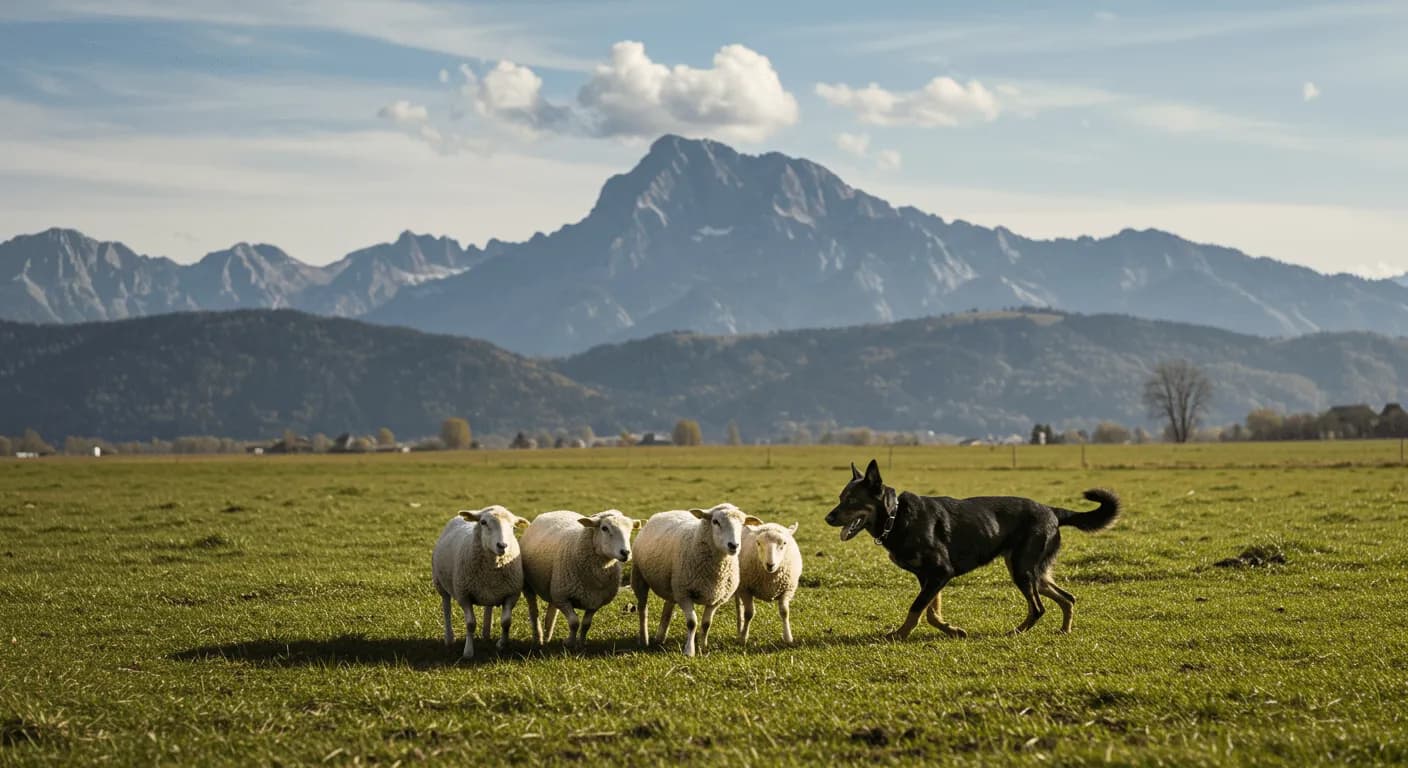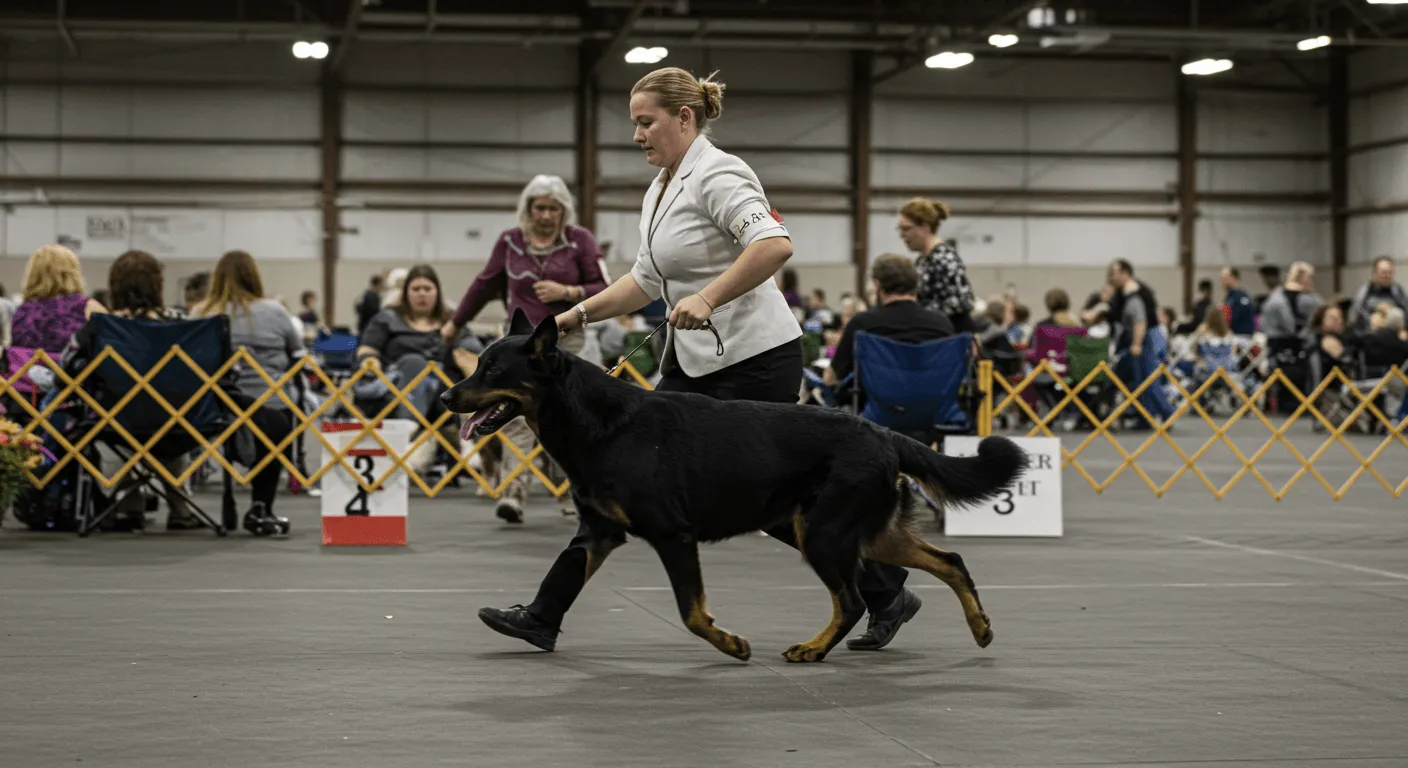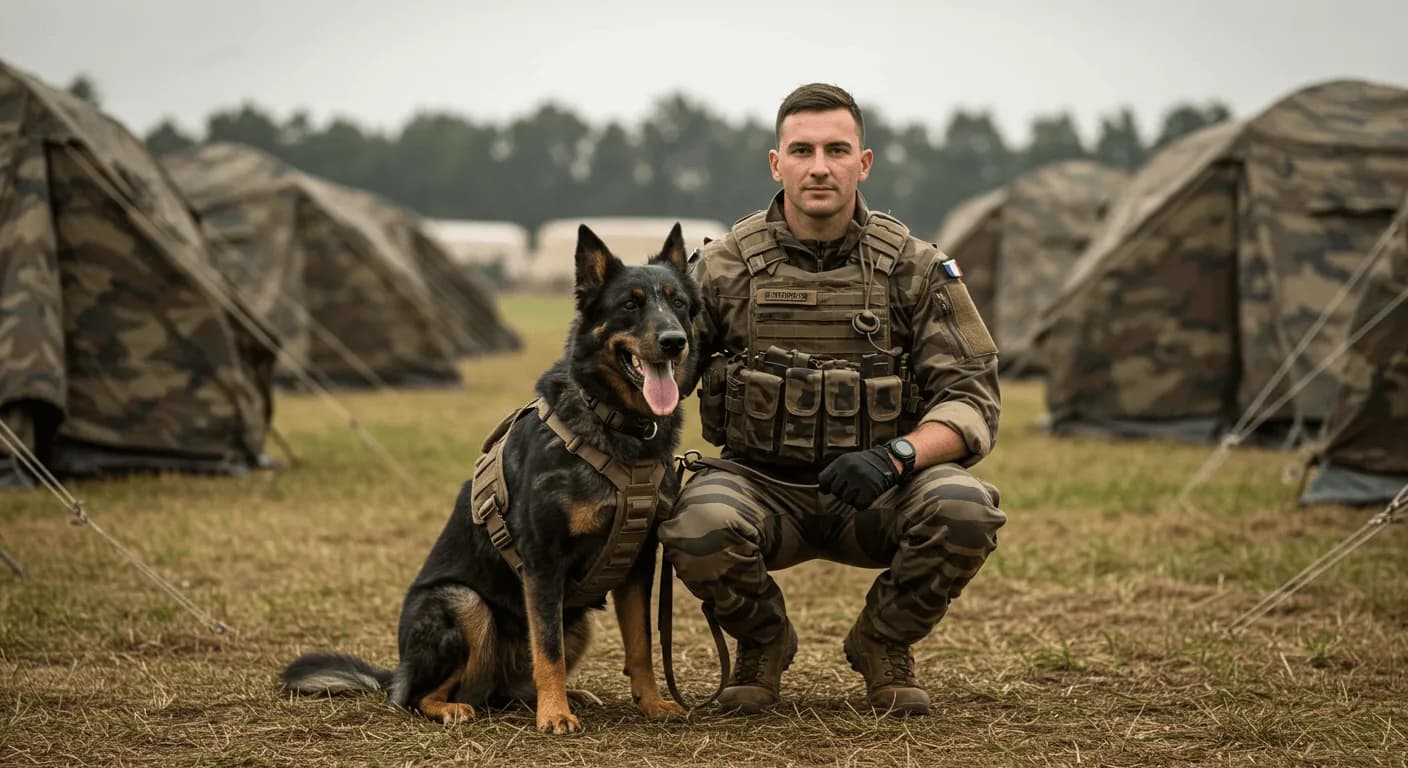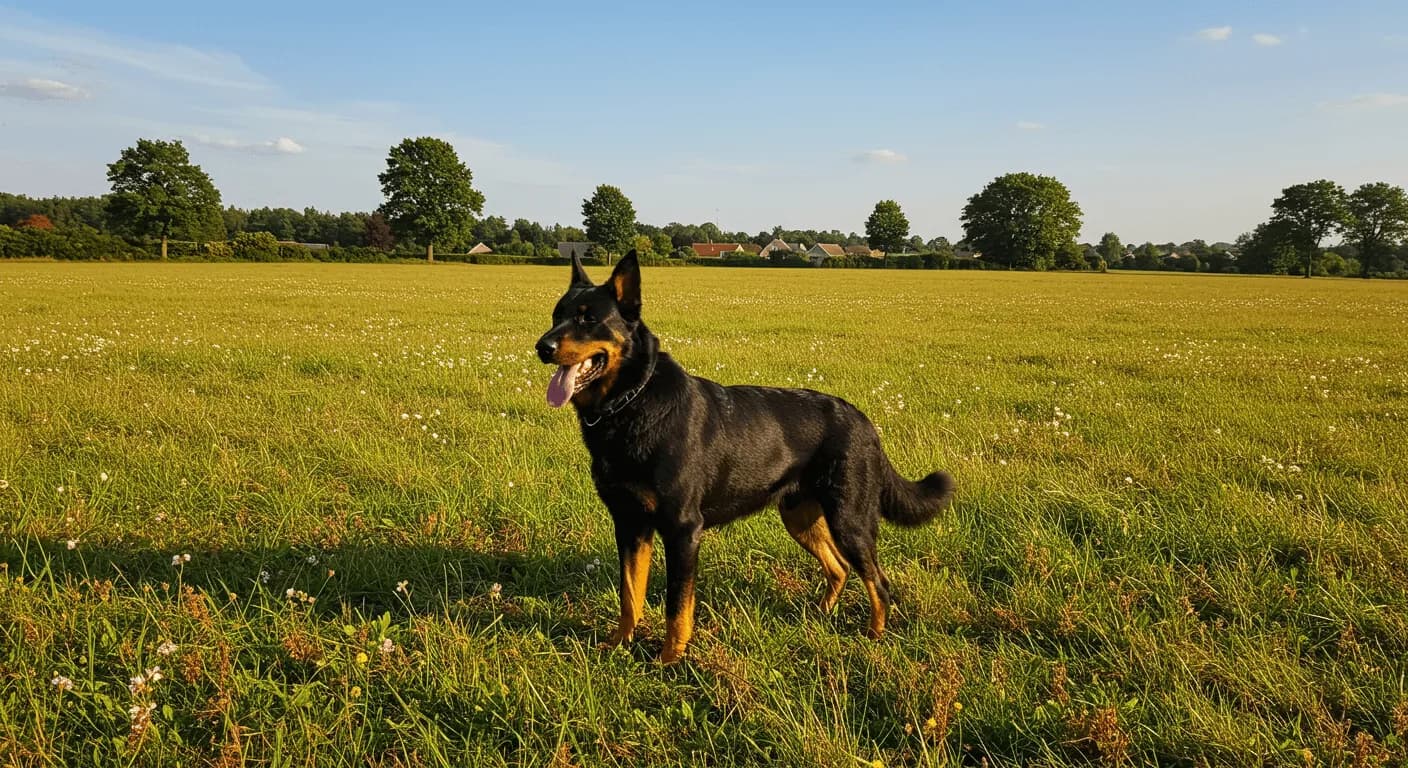The Beauceron is one of France’s oldest and most distinguished herding breeds—an intelligent, sturdy, and loyal working dog that has left significant paw prints on the farms and battlefields of Europe for centuries. If you’ve ever wondered about the backstory behind this regal guardian, this deep dive into the Beauceron's history and origin will walk you through where the Beauceron came from, how the breed was developed, and what it was bred for. We’ll explore the Beauceron bloodlines history, its historical functions, how the breed got its name, and trace the path the breed took when it came to America.
Early History and Origin of the Beauceron
The Beauceron history and origin can be traced all the way back to early French livestock dogs used during the Middle Ages. These dogs are believed to share a common ancestry with the Briard—another herding breed native to France. They are both descendants of a regional, rugged, and multipurpose pastoral type that worked the open fields of the Beauce, a fertile agricultural region located southwest of Paris.
The earliest written reference to a dog resembling today’s Beauceron appears in a 1578 manuscript by renowned author Charles Estienne. He differentiated between two types of "berger" (shepherd) dogs found in France at the time: the long-haired variant (which later became the Briard) and the short-coated type (which evolved into the Beauceron). This key moment marks the first known mentions of the Beauceron, although it wasn't called by that name yet.
From early on, these berger de Beauce dogs were tasked with herding vast flocks of sheep, protecting livestock from wolves and poachers, and serving as guardians of rural homesteads. Their remarkable versatility and resilience made them a favorite among French shepherds.
How the Beauceron Was Developed
Understanding how the Beauceron was developed sheds light on why they possess their distinctive combination of intelligence, athleticism, and loyalty. Beaucerons were not sculpted in a laboratory-like kennel but rather evolved through natural selection and generations of rural work. French shepherds bred only the most capable and reliable dogs—those who could manage sheep, fend off predators, and exhibit adequate stamina to endure long days outdoors in all weather.
The breed slowly began to formalize in the late 19th century. In 1863, during a Paris dog show, both the Beauceron and Briard were acknowledged as distinct types of chien de berger. The official development of the Beauceron began in earnest in 1896 when Pierre Mégnin, a veterinarian and breed historian, classified the long-haired herding dogs as "Chien de Brie" (Briard) and the short-coated ones as "Chien de Beauce" (Beauceron), based on the regions where these styles of dogs had predominated historically.
That same year, the breed standard was drafted and soon after, in 1897, the Club des Amis du Beauceron was formed to protect and promote the breed’s standard. This marked an essential step in preserving Beauceron bloodlines history and underscored how seriously France valued this powerful herding dog.

What Country the Beauceron Came From and Its Cultural Context
When it comes to what country the Beauceron came from, the answer is unequivocally France. This breed is as French as baguettes and the Eiffel Tower. Beyond its origin, the Beauceron has deep cultural implications, particularly among rural and farming communities. In the French countryside, especially around the Beauce region, these dogs were esteemed for their reliability and faithfulness. Donning a black-and-tan coat (with some variety allowing for harlequin coloring), they were instantly recognizable among shepherds.
The original native landscape where the Beauceron thrived included wide farmlands, open meadows, and wooded plains. This allowed (and required) the breed to develop with heightened agility, strong instincts for control, and a muscular but elegant physique.
Historical Purpose and Function
Let’s explore what the Beauceron was bred for. These dogs were developed with a very clear purpose in mind:
- Herding large flocks of sheep
- Guarding livestock from threats, including wolves and thieves
- Acting as estate guardians, entrusted with the security of homes and farms
- Later, serving in French military and police roles
As their capabilities became more widely known, Beaucerons were co-opted for roles far beyond the pasture. During both World Wars, Beaucerons served in the French army as message carriers, mine detectors, and rescue dogs. Their intelligence, endurance, and loyalty made them ideal for complex military tasks. Few breeds can claim such diverse and direct contributions to human welfare.
Naming and Nomenclature: How the Beauceron Got Its Name
So, how the Beauceron got its name offers another interesting layer to its story. The term “Beauceron” was derived from the name “Beauce”—a rich agricultural region of northern France where these herders most commonly worked. The naming distinction was shaped largely by taxonomic efforts in the 19th century when it became necessary to differentiate the types of shepherd dogs by region and coat length.
The etymology of the breed name reflects its geographic root. “Chien de Beauce” literally means “dog of Beauce." Over time, the name was shortened and adapted to the more formal “Beauceron” we use today.
Interestingly, the name has a certain nobility to it in French, further enhancing the breed’s proud, vigilant character. The breed is also colloquially known as the Bas Rouge, meaning “red stockings” because of the distinct rust-colored markings on their legs that resemble red socks, which is a hallmark of their appearance.
The First Beaucerons in America
When the Beauceron came to America is relatively recent in the grand scope of its history. Although the breed has been well loved in France for centuries, the Beauceron only began to appear in the United States in the mid-to-late 20th century. The first known imports occurred in the 1960s, but it took a few decades for the breed to gain a footing.
It wasn’t until 2001 that the American Kennel Club (AKC) recognized the Beauceron in the Miscellaneous Class, before granting it full recognition in the Herding Group in 2007. Today, dedicated breed clubs like the American Beauceron Club help to maintain high breeding standards and awareness in North America.

Historical Impact and Legacy
Over the centuries, the Beauceron has made substantial societal contributions. Its role in agriculture helped maintain order in livestock herding. During wartime, its valor and intelligence were so esteemed that Beaucerons were sometimes awarded medals for their service.
The influence of the Beauceron on human activities can’t be overstated. A few key legacy points include:
- Participation in both World Wars for communications and tracking
- Guarding vineyards and fields from intruders in rural France
- Inspiring trust and admiration from shepherds, farmers, and soldiers alike
- Becoming a model for other modern herding and working breeds due to its versatility
Even today, the Beauceron continues to prove its worth in a variety of tasks. The breed is now used for search and rescue, police K9 units, personal protection, and competitive obedience and agility.

Key Moments in Beauceron Breed History
To better understand the Beauceron bloodlines history, here are major milestones in its timeline:
- 1578 – First recorded mention in text by Charles Estienne.
- 1863 – Beauceron exhibited at the Paris Dog Show.
- 1896 – Pierre Mégnin formally distinguishes the breed; name “Beauceron” adopted.
- 1897 – Formation of the breed club, Club des Amis du Beauceron.
- World Wars – Serves in French military applications.
- 1960s – Introduced to the United States.
- 2001 – Recognized under Miscellaneous Class by AKC.
- 2007 – Full AKC recognition into the Herding Group.
What Makes the Beauceron Unique?
Let’s summarize what sets this distinguished breed apart with a few key traits:
- Highly intelligent and trainable
- Naturally protective and loyal
- Double dewclaws on rear legs, a breed requirement
- Distinct red “sock” markings known as Bas Rouge
- Calm but courageous temperament
The Beauceron is unmistakable in form and formidable in function. Its combination of raw working ability with composed beauty makes it a legend in herding and protector circles alike.
Quick Facts About the Beauceron
Here’s a quick list to remember when considering the history of the Beauceron:
- Origin: Beauce, France
- Role: Herding, guarding, war service
- Appearance: Black & tan or harlequin, strong and athletic
- First Mentioned: 1578
- Recognized by AKC: 2007
In future sections, we’ll also explore the breed’s development in more detail as well as its influence across other breeds. For now, it’s clear that the Beauceron is not just a protector of the flock—but a treasured guardian of French heritage.
Conclusion
The Beauceron's journey from the pastures of Beauce to modern homes and fields worldwide is a testament to its enduring value, adaptability, and unshakeable bond with humans. As we've explored, the breed’s history is rich with purpose — from herding and guarding to serving alongside soldiers in times of war. Its evolution from a regional working dog to an internationally recognized breed reflects the care, dedication, and respect it has earned over generations.
Understanding the Beauceron history and origin gives us not just insight into the breed itself, but into the broader connection between humans and dogs. Few breeds can claim such a profound legacy, blending tradition and versatility across centuries. Whether as steadfast workers or loving companions, Beaucerons continue to exemplify the strength and spirit that first shaped them on the French plains.

